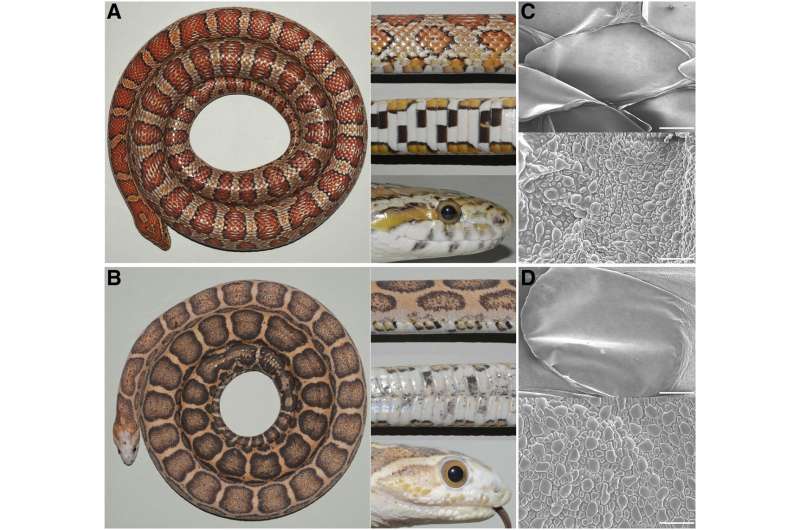June 20, 2023 report
This article has been reviewed according to Science X's editorial process and policies. Editors have highlighted the following attributes while ensuring the content's credibility:
fact-checked
peer-reviewed publication
trusted source
proofread
Editing a snake genome to stop production of dorsal scales

A team of geneticists and evolutionary specialists at the University of Geneva working with a colleague from the University of Zurich report that the hexagonal patterns seen on the backs and sides of some snakes are not self-organizing. In their study, published in the journal Science Advances, the group used the CRISPR-Cas9 gene editing tool to create the first genetically modified snake.
Many snakes are known for hexagonal patterns on their backs and sides. Prior research has shown that such patterns exist in the scales on the outer skin and the patterns grow from placodes, which are tiny structures on the skin. For most animal species, placode placement in the skin is random. For snakes, it is not. Instead, they develop in an organized fashion. They are so organized that Alan Turing was able to describe them using mathematical formulas. In this new effort, the research team wanted to know how such well-organized hexagonal patterns form on snakes.
The team began by choosing the corn snake, a type of rat snake. Such snakes have the desired hexagonal patterns and are easy work with—they are generally not afraid of humans, are nonpoisonous and seldom bite. The hexagonal patterns only occur on the top and sides of the snake—the skin on the belly has scales but no patterns.
The team used a variety of techniques to study the development of the scales on top of the snake and below. They found that the underbelly scales formed first and aligned with cells that determine where ribs, muscles, vertebrae and even skin would form. Next, two independent waves of scale development occurred, moving toward one another—they eventually met laterally, resulting in the creation of the hex patterns on the top and sides of the snake.
The team then genetically engineered four sample snakes to disable the EDA gene and grow without scales on their backs and sides. The resulting development of the snakes proved that back and side scales are not self-organizing and that they occur without an EDA gene pathway.
More information: Athanasia C. Tzika et al, Somitic positional information guides self-organized patterning of snake scales, Science Advances (2023). DOI: 10.1126/sciadv.adf8834
Journal information: Science Advances
© 2023 Science X Network

















